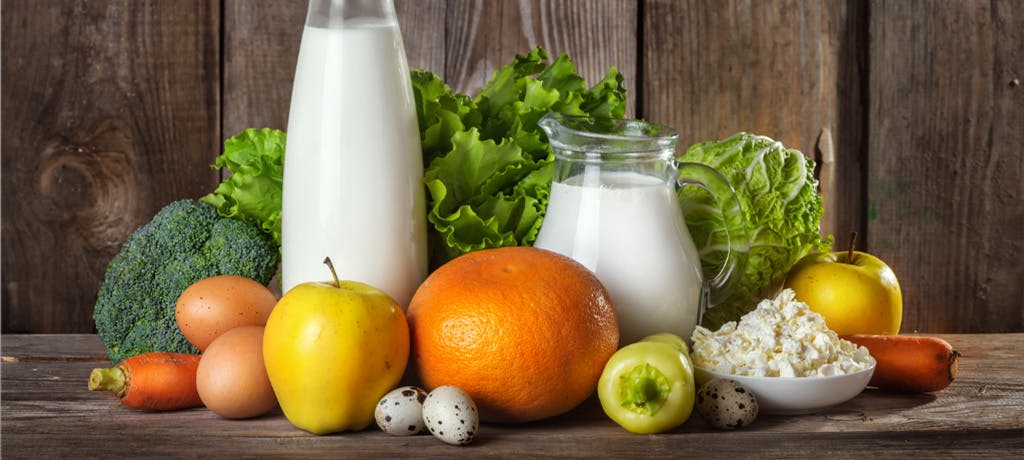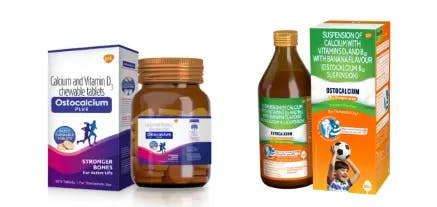We always use the phrase ‘building’ strong bones and it is completely true. As elaborated in an earlier article, strong bones are built with a combination of balanced diet and a healthy lifestyle. Consuming them from an early age can help build up the bone bank for old age. Let us focus on a list of good foods for building strong bones.
Milk and Milk Products
Milk and milk products, such as curd and cheese provide bioavailable form of Calcium. Sometimes there is added Vitamin D3 in milk, making it a good source of this Vitamin D3.
Fish
Oily fish, such as salmon or raavas, mackerel or bangda, are rich in Vitamin D3. Other fish that can be eaten with bones are a great source of Calcium.
Fruits and Vegetables
Fruits and vegetables not only provide Calcium but are also a great source of other micronutrients required for bone health. Green leafy vegetables provide Calcium, Magnesium, and Vitamin K. Tomatoes, banana, papaya, capsicum, oranges, and potatoes provide Vitamin C, Potassium, and Magnesium.
Strong Bone Tip
When you are buying readymade foods, look out for the word ‘fortified’ in the labels. Butter or fat spread, cornflakes, oil, milk, powdered milk, orange juice, or any other foods can be fortified with Vitamin D3
Want strong bones? Here are some more eating tips for them.
Here are some bone facts you need to know.
1. Cereals are not a good source of Calcium as they have phytic acid. They bind to Calcium to make it unavailable.
2. Eating a lot of animal protein foods such as mutton and chicken can make your body lose Calcium. This is why consuming a balanced diet is important.
3. Eating too much salt found in readymade foods or at home can result in Calcium excretion3. Hence, it is important to balance salt intake.
4. Drinking too much alcohol is a known risk factor for osteoporosis3. Hence it is important to limit intake.
5. Tea and coffee contain caffeine, the ingredient which has been linked to cause Calcium loss3. Hence excessive consumption of tea or coffee has to be avoided.
Strong bones are a lifelong asset. Dietary modification is an important strategy that helps in building and preserving bone health. Many studies have found the beneficial influence of Vitamins and Minerals on bone health6. However, as much as 70% of Indians report low consumption of these micronutrients, which might affect the health of their bones too7. Hence, it is important to consume a balanced diet for overall health and for that of the bones too. Dietary shortfall of these bone-building nutrients can be filled by supplementing Calcium and Vitamin D3. In addition to consuming foods, it is also important to follow it up with physical activity and sun exposure for Vitamin D3
References
1. The National Health Services. Food for strong bones. Available from: https:/www.nhs.uk/live-well/healthy-body/food-for-strong-bones/. Accessed on: 27 July 2020.
2. Indian Council of Medical Research. Nutrient requirements and RDA for Indians – A report of the expert group of the ICMR 2010.
3. British Nutrition Foundation. Dietary calcium and health; briefing paper. Available from: https:/onlinelibrary.wiley.com/doi/full/10.1111/j. 1467-3010.2005.00514.x. Accessed on: 11 August 2020. (Page 16, 24, 26)
4. National Osteoporosis Foundation. Food and Your Bones — Osteoporosis Nutrition Guidelines. Available from: https:/www.nof.org/ patients/treatment/nutrition/. Accessed on: 27 July 2020.
5. Sellmeyer DE, Stone KL, Sebastian A, Cummings SR. A high ratio of dietary animal to vegetable protein increases the rate of bone loss and the risk of fracture in postmenopausal women. Study of Osteoporotic Fractures Research Group. Am J Clin Nutr. 2001;73(1):118-122. doi: 10.1093/ajcn/73.1.118
6. Sahni S, Mangano KM, McLean RR, et al. Dietary Approaches for Bone Health: Lessons from the Framingham Osteoporosis Study. Curr Osteoporos Rep. 2015;13(4):245–255.
7. Kotecha PV. Micronutrient Malnutrition in India: Let Us Say "No" to it Now. Indian J Community Med. 2008;33(1):9-10. doi: 10.4103/0970-0218.39235




